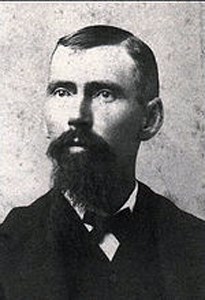
Found on the far western end of the Preserve, there exists a unique feature in the state of Florida, with an equally unique history. This 90-foot-deep naturally occurring sinkhole lake is the deepest lake south of Lake Okeechobee, and one of the deepest in the entire state. Interestingly, studies show the top half is freshwater, and the lower is saltwater. Because of its abundance of lush vegetation, water, and high ground, it is a magnet to not just wildlife, but for people as well. 
Born in 1810, Seminole Chief Holata Micco, better known as Billie Bowlegs, and his family, held territory very near here. The land was relatively high and fertile, making it conducive to growing fruit trees and gardens. Following the Second Seminole War in 1842, they lived in relative peace. However, in 1855, either intentionally, or by accident, a group of US Army engineers and surveyors destroyed the camp, fruit trees, and gardens when he wasn't there. This act is what many historians believe was the catalyst that started the Third Seminole War, from 1855-1858. After years of resistence he surrendered in 1858, after relentless hounding and pressure from the US Army and relocated to "Indian Territory," present day Oklahoma, with the rest of his family and tribe. He died in 1859. Shortly after 1900, approximately 300 aces of the Deep Lake area were acquired by Walter Langford and John Roach, with plans to develop the land into a grapefruit enterprise. After years laborious work the land was mostly cleared of pine trees. A hearty variety of marsh seedless grapefruit trees were planted, which could handle the elements and produce fruit quickly. Due to a lack of infrastructure in Southwest Florida at the time, the partners in the grapefruit enterprise had difficulty bringing supplies and fruit trees from Fort Myers and had to ship their matured fruit by oxcart to market. Since there were no roads, canals, nor railways, they built their own tiny rail system in 1913, from Everglades to Deep Lake. 
They created a gas-powered railroad car out of a Ford automobile engine, and mounted on a four-wheeled rail car. The wheels were flanged to run on the rail, along with some small flat cars mounted on four wheels to transport their crop. The railway line eventually extended to Everglades City. However, the line had been laid without benefit of a grade, so it was prone to flooding in wet weather. By 1915, boxes of Deep Lake grapefruit were being brought to market by the thousands. Walter Langford died in 1920, at age 47. In 1921, upon hearing about this intriguing natural feature, Charles Torrey Simpson, a renouned American botanist and conservationist visited the lake one year before Barron Collier purchased it. He describes the lake in detail in his book, Out of Doors in Florida. "It's possible for the lake to have been an enormous spring that has long since been dead." He concludes his study by stating: "The bottom of the lake is sloped like a cone and if a line rested on one of its shelves it would register 95 feet, but if it went through the mouth of the spring it would probably be unfathomable." 
Though he tended to avoid controversy regarding development, in Ornamental Gardening in Florida, he wrote, "Mankind everywhere has an insane desire to waste and destroy the good and beautiful things this nature has lavished upon him." In 1921, Barron Collier, a wealthy streetcar advertising magnate and entrepreneur, and friend of John Roach, became heavily interested in the area, not just as a retreat for hunting and relaxing, but also for its business potential. He purchased the grapefruit grove and the Deep Lake Railroad from John Roach and Walter Langford in 1922, and steadily bought up land in the area to grow his business, later called Deep Lake Grove & Cannery. He then purchased additional land, including George Storter's large holdings south of Deep Lake and around Halfway Creek, for the purpose of expanding his railroad. Completed in 1928, he sold the Deep Lake Grove Railway to Atlantic Coastline Railway. This would later become State Road 29. 
However, due to labor costs, lowered profits and the death of Barron Collier the business closed after a decade of prosperity in early 1940. 
NPS Image |
Last updated: August 1, 2025
